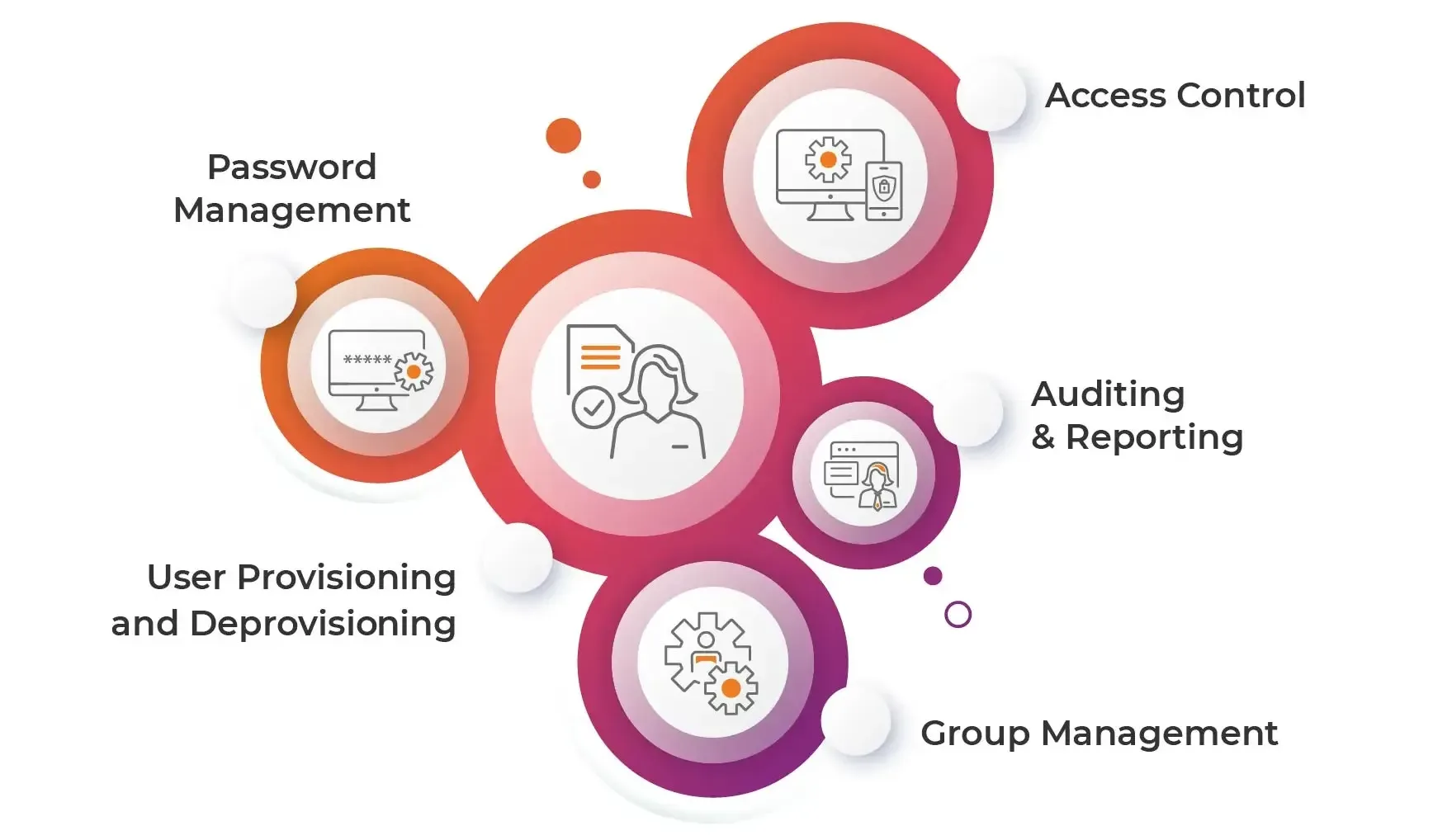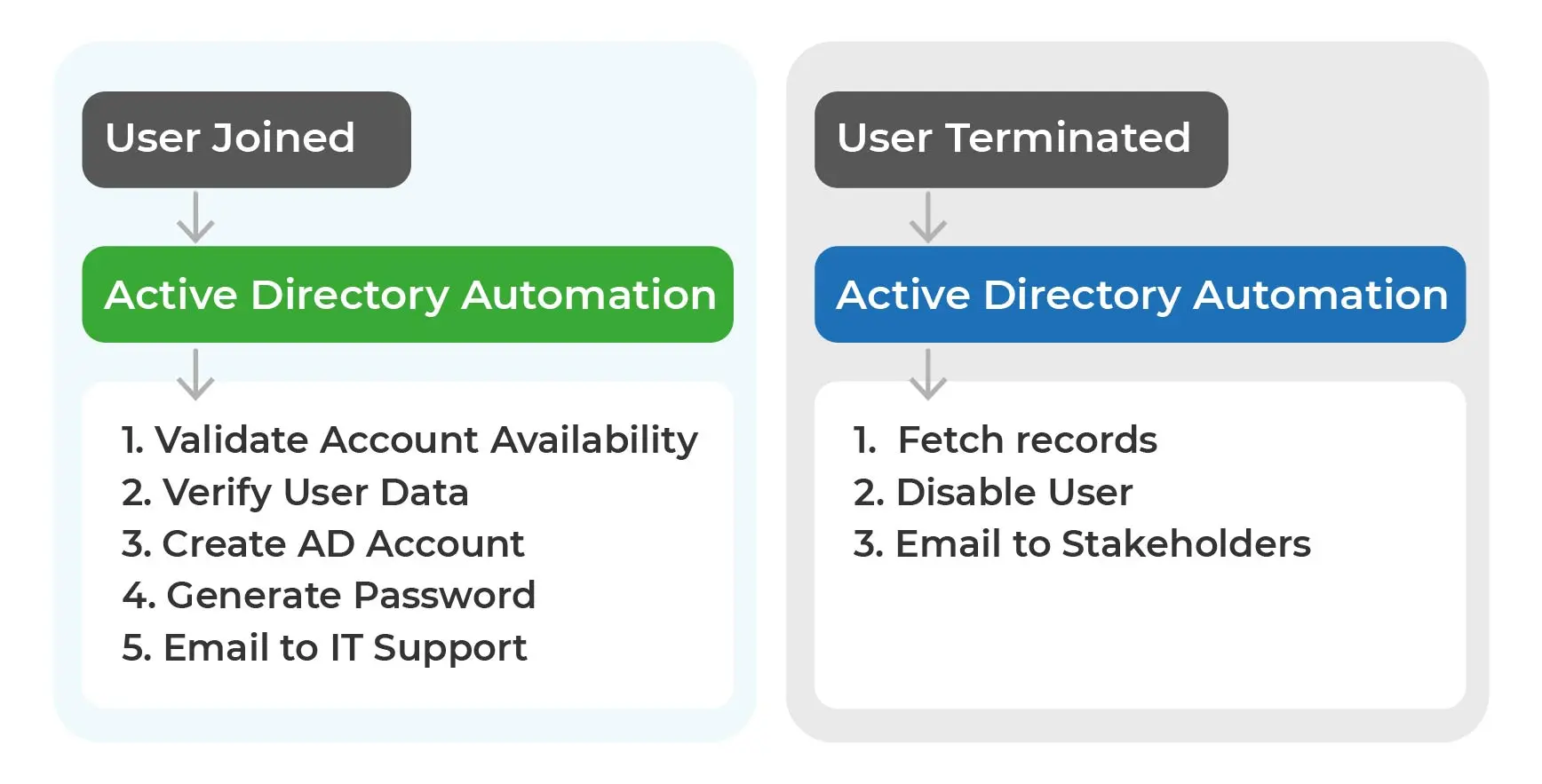An active directory is crucial for managing user accounts, permissions, and network resources in IT operations. Manually managing active directory becomes a challenge as the network grows in complexity and scale. To keep the organization running, the IT operational team spends more hours on repetitive but mandatory tasks such as user account management, password reset, and access control.
But it doesn’t have to be this way. Active directory Automation is a necessity for organizations to streamline IT operations. In this article, let us explore the multiple aspects of active directory automation and its benefits for IT operations.
Why Does Active Directory Matter?
The Active Directory is the backbone of IT infrastructure. It provides a central repository for user group management, computers, and other network devices. Along with offering a central repository system, an Active Directory enables IT administrators to enforce security policies, user authentication, and access control to network resources. By providing a hierarchical structure of resources, an Active Directory makes it easy for the IT operational team to manage their administrative tasks and promotes better collaboration across IT organizations.
Manual Active Directory Management Challenges
Managing an active directory manually is a challenge for the IT operational team. Some of its challenges include-
-
Increased Legal Risk with Data Collection
In the digital age, organizations use nontraditional employee onboarding to track employee activities. With high employee data comes legal risk. Organizations must have elaborate data records for their day-to-day activities to ensure compliance with regulatory standards. However, most organizations lack reporting system activity in the active directory, which increases the legal risk.
-
Human Error in Data Processing
Manual active directory management increases the risk of typos, inaccuracies, and data inconsistencies in activity directory configuration. Suppose an IT service desk agent misplaced a username or group membership character. These human errors will lead to unintended permission or access to the system. Further, this data inconsistency can risk data security in active directory management.
-
Inefficient Employee Experience
Across IT organizations, most employees require access to several systems and applications. With high-volume user provisioning de-provisioning, IT service desk agents struggle to process each request on time. Also, manual provisioning takes days to complete, which deters the employee experience and leads to inefficiency.
Active Directory Automation Examples

-
User Provisioning and Deprovisioning
This IT process involves creating, modifying, and managing user accounts within the active directory. Active directory user account automation can create a pre-defined workflow and policy for user account management when an employee joins or leaves.

-
Group Management
In IT infrastructure, group management means creating, modifying and deleting security groups and distribution lists in the active directory. Active directory automation tools can easily set up automated workflows to assign group membership based on user roles and attributes, create project-specific security groups, and enforce access control policies across the organization. Active directory automation can take care of the tasks like-
- Group Member Extraction
- Create & Delete Group
- Get Group Properties
- Check Group Existence
-
Password Management
Password reset is one of the most common requests IT service desk agents receive. Manual password reset, including policy enforcement, is a time-consuming task. Active directory automation can reduce the burden of service desk agents by creating a self-service portal for easy password management. An automated password reset system can enforce password complexity requirements, expiration policies, and multifactor authentication to enhance password security.
-
Auditing & Reporting
Audit management is another aspect of IT infrastructure that requires the constant attention of IT service desk agents. However, managing audit log collection, data analysis, and reporting requires much time and resources. Instead of performing audit monitoring manually, active directory automation tools can capture and centralize all the audit logs from various active directory components, including group memberships, user logins, and other administrative activities.
Enabling real-time auditing reports and activity directory automation can detect anomalous behavior, unauthorized access attempts, and compliance violations. IT automation streamlines Active Directory management, empowering IT organizations to proactively address security risks and ensure compliance effortlessly.
-
Access Control
Active directory access control involves assigning, modifying, and revoking access rights and permissions. Automating access control enables administrators to define granular access control policies based on user role, departments, and organizational hierarchies.
Consider a scenario where a large organization implements Active Directory automation to manage employee access control. This organization has defined role-based policies that grant different employee access levels based on their roles and responsibilities. Hence, the finance department will have access to finance data, and the sales department will only get access to CRM data.
Conclusion
AutomationEdge IT Process Automation solution offers active directory automation to manage the complexity of user account management, access control, and security in a network environment. Embracing AutomationEdge’s active directory automation tools benefits organizations by helping them build strong IT infrastructure and overcome challenges in the ever-evolving digital era.
The post Active Directory Automation to Empower IT Operations appeared first on AutomationEdge.
This is a companion discussion topic for the original entry at https://automationedge.com/blogs/active-directory-automation/